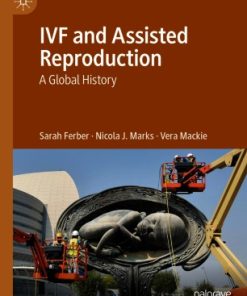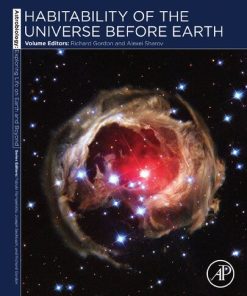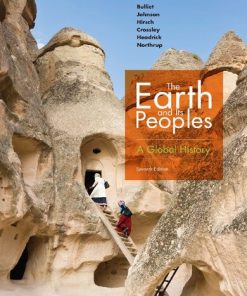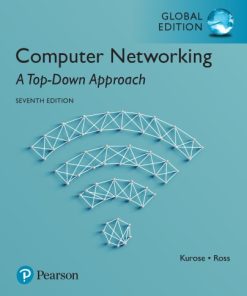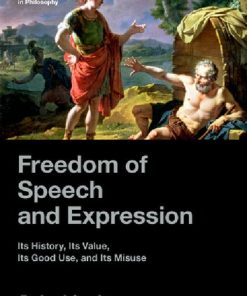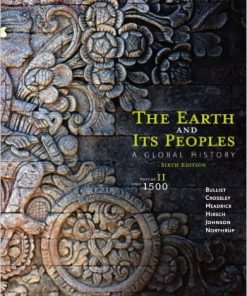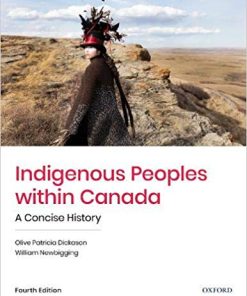(Ebook PDF) The Earth and Its Peoples A Global History 7th Edition by Richard Bulliet 9798214341903 full chapters
$50.00 Original price was: $50.00.$25.00Current price is: $25.00.
The Earth and Its Peoples: A Global History 7th Edition by Richard Bulliet – Ebook PDF Instant Download/DeliveryISBN: 9798214341903
Full download The Earth and Its Peoples: A Global History 7th Edition after payment
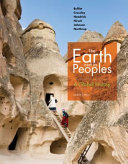
Product details:
ISBN-13 : 9798214341903
Author: Richard Bulliet
Featuring a beautiful new design, THE EARTH AND ITS PEOPLES, 7th Edition, presents world history in a balanced, global framework, shifting the focus away from political centers of power and toward the living conditions and activities of ordinary people. This truly global world history book employs a fundamental theme — the interaction of human beings and the environment — to compare different times, places, and societies. Special emphasis is given to technology (in its broadest sense) and how technological development underlies all human activity.
The Earth and Its Peoples: A Global History 7th Table of contents:
Part I. The Emergence of Human Communities, to 500 BCE
Chapter 1. Nature, Humanity, and History, to 3500 BCE
1-1. African Genesis
1-1a. Interpreting the Evidence
1-1b. Human Evolution
1-1c. Migrations from Africa
1-2. Technology and Culture in the Ice Age
1-2a. Food Gathering and Stone Tools
1-2b. Gender Roles and Social Life
1-2c. Hearths and Cultural Expressions
1-3. The Agricultural Revolutions
1-3a. The Transition to Plant Cultivation
1-3b. Domesticated Animals and Pastoralism
1-3c. Agriculture and Ecological Crisis
1-4. Life in Neolithic Communities
1-4a. The Triumph of Food Producers
1-4b. Cultural Expressions
1-4c. Early Towns and Specialists
1-5. Conclusion
Key Terms
Review Questions
Chapter 2. The First River-Valley Civilizations, 3500–1500 BCE
2-1. Mesopotamia
2-1a. Settled Agriculture in an Unstable Landscape
2-1b. Sumerians and Semites
2-1c. Cities, Kings, and Trade
2-1d. Mesopotamian Society
2-1e. Gods, Priests, and Temples
2-1f. Technology and Science
2-2. Egypt
2-2a. The Land of Egypt: “Gift of the Nile”
2-2b. Divine Kingship
2-2c. Administration and Communication
2-2d. The People of Egypt
2-2e. Belief and Knowledge
2-3. The Indus Valley Civilization
2-3a. Natural Environment
2-3b. Material Culture
2-3c. Transformation of the Indus Valley Civilization
2-4. Conclusion
Key Terms
Review Questions
Chapter 3. The Mediterranean and Middle East, 2000–500 BCE
3-1. The Cosmopolitan Middle East, 1700–1100 BCE
3-1a. Western Asia
3-1b. New Kingdom Egypt
3-1c. Commerce and Communication
3-2. The Aegean World, 2000–1100 BCE
3-2a. Minoan Crete
3-2b. Mycenaean Greece
3-2c. The Fall of Late Bronze Age Civilizations
3-3. The Assyrian Empire, 911–612 BCE
3-3a. God and King
3-3b. Conquest and Control
3-3c. Assyrian Society and Culture
3-4. Israel, 2000–500 BCE
3-4a. Origins, Exodus, and Settlement
3-4b. Rise of the Monarchy
3-4c. Fragmentation and Dispersal
3-5. Phoenicia and the Mediterranean,1200–500 BCE
3-5a. The Phoenician City-States
3-5b. Expansion into the Mediterranean
3-5c. Carthage’s Commercial Empire
3-5d. War and Religion
3-6. Failure and Transformation, 750–550 BCE
3-7. Conclusion
Key Terms
Review Questions
Chapter 4. New Civilizations Outside the West Asian Core Area, 2300 BCE–350 CE
4-1. Early China, 2000–221 BCE
4-1a. Geography and Resources
4-1b. The Late Neolithic: Artifacts and Legends
4-1c. The Shang Period, 1766–1045 BCE
4-1d. The Zhou Period, 1045–221 BCE
4-1e. Confucianism, Daoism, and Chinese Society
4-1f. The Warring States Period, 481–221 BCE
4-2. Nubia, 2300 BCE–350 CE
4-2a. Early Cultures and Egyptian Domination, 2300–1100 BCE
4-2b. The Kingdom of Meroë, 800 BCE–350 CE
4-3. Pastoral Nomads of the Eurasian Steppes, 1000–100 BCE
4-3a. Early Nomadism
4-3b. Steppe Nomads
4-3c. The Scythians
4-3d. China and the Nomads
4-4. Celtic Europe, 1000–50 BCE
4-4a. The Spread of the Celts
4-4b. Celtic Society
4-4c. Belief and Knowledge
4-5. Conclusion
Environment and Organization
Religion and Power
A Tale of Two Hemispheres
Key Terms
Review Questions
Material Culture: Wine and Beer in the Ancient World
Issues in World History: Animal Domestication
Part II. The Formation of New Cultural Communities, 1000 BCE–400 CE
Chapter 5. Greece and Iran, 1000–30 BCE
5-1. Ancient Iran, 1000–500 BCE
5-1a. Geography and Resources
5-1b. The Rise of the Persian Empire
5-1c. Imperial Organization
5-1d. Ideology and Religion
5-2. The Rise of the Greeks, 1000–500 BCE
5-2a. Geography and Resources
5-2b. The Emergence of the Polis
5-2c. New Intellectual Currents
5-2d. Athens and Sparta
5-3. The Struggle of Persia and Greece, 546–323 BCE
5-3a. Early Encounters
5-3b. The Height of Athenian Power
5-3c. Inequality in Classical Greece
5-3d. Failure of the City-State and Triumph of the Macedonians
5-4. The Hellenistic Synthesis, 323–30 BCE
5-5. Conclusion
Key Terms
Review Questions
Chapter 6. An Age of Empires: Rome and Han China, 753 BCE–330 CE
6-1. Rome’s Creation of a Mediterranean Empire, 753 BCE–330 CE
6-1a. A Republic of Farmers, 753–31 BCE
6-1b. Expansion in Italy and the Mediterranean
6-1c. The Failure of the Republic
6-1d. The Roman Principate, 31 BCE–330 CE
6-1e. An Urban Empire
6-1f. The Rise of Christianity
6-1g. Technology and Transformation
6-2. The Origins of Imperial China, 221 BCE–220 CE
6-2a. The Qin Unification of China, 221–206 BCE
6-2b. The Long Reign of the Han, 202 BCE–220 CE
6-2c. Chinese Society
6-2d. New Forms of Thought and Belief
6-2e. Decline of the Han
6-3. Conclusion
Key Terms
Review Questions
Chapter 7. India and Southeast Asia, 1500 BCE–1025 CE
7-1. Foundations of Indian Civilization, 1500 BCE–300 CE
7-1a. The Indian Subcontinent
7-1b. The Vedic Age
7-1c. Challenges to the Old Order: Jainism and Buddhism
7-1d. The Evolution of Hinduism
7-2. Imperial Expansion and Collapse, 324 BCE–650 CE
7-2a. The Mauryan Empire, 324–184 BCE
7-2b. Commerce and Culture in an Era of Political Fragmentation
7-2c. The Gupta Empire, 320–550 CE
7-3. Southeast Asia, 50–1025 CE
7-3a. Early Civilization
7-3b. The Srivijayan Kingdom
7-4. Conclusion
Key Terms
Review Questions
Chapter 8. Peoples and Civilizations of the Americas, from 1200 BCE
8-1. Formative Civilizations of the Olmec and Chavín, 1200–200 BCE
8-1a. The Mesoamerican Olmec, 1200–400 BCE
8-1b. Early South American Civilization: Chavín, 900–200 BCE
8-2. Classic-Era Culture and Society in Mesoamerica, 200–900
8-2a. Teotihuacan
8-2b. The Maya
8-3. The Postclassic Period in Mesoamerica, 900–1300
8-3a. The Toltecs
8-3b. Cholula
8-4. Northern Peoples
8-4a. Southwestern Desert Cultures
8-4b. Mound Builders: The Hopewell and Mississippian Cultures
8-5. Andean Civilizations, 200–1400
8-5a. Cultural Response to Environmental Challenge
8-5b. The Early Intermediate Period Moche
8-5c. Tiwanaku and Wari
8-5d. Chimú
8-6. Conclusion
Key Terms
Review Questions
Material Culture: Bells, Gongs, and Drums
Issues in World History: Oral Societies and the Consequences of Literacy
Part III. Growth and Interaction of Cultural Communities, 300 BCE–1200 CE
Chapter 9. Networks of Communication and Exchange, 300 BCE–1100 CE
9-1. The Silk Road
9-1a. Iranians and Chinese
9-1b. Silk and New Crops
9-1c. Nomadism in Central and Inner Asia
9-1d. The Impact of the Silk Road
9-1e. Warriors and Missionaries
9-2. The Indian Ocean Maritime System
9-2a. Sailors’ Tales
9-2b. Ship Design
9-2c. Origins of Contact and Trade
9-2d. Indonesians in Madagascar
9-2e. The Impact of Indian Ocean Trade
9-2f. Incense, Ivory, and Pottery
9-2g. Western Ports
9-2h. Eastern Ports
9-3. Routes Across the Sahara
9-3a. Early Saharan Cultures
9-3b. Rock Paintings
9-3c. The Coming of the Camel
9-3d. Trade Across the Sahara
9-4. Sub-Saharan Africa
9-4a. A Challenging Geography
9-4b. The Development of Cultural Unity
9-4c. Economies and Social Practices
9-4d. An Isolated World
9-4e. African Cultural Characteristics
9-4f. Migration from an Expanding Desert
9-4g. The Advent of Iron and the Bantu Migrations
9-4h. Early Metalworking
9-4i. Linguistic Relations
9-5. The Spread of Ideas
9-5a. Ideas and Material Evidence
9-5b. Domestic Pigs
9-5c. The Spread of Buddhism
9-5d. Two Kings: Ashoka and Kanishka
9-5e. The Spread of Christianity
9-6. Conclusion
Key Terms
Review Questions
Chapter 10. The Sasanid Empire and the Rise of Islam, 200–1200
10-1. The Sasanid Empire, 224–651
10-1a. Politics and Society
10-1b. Religion and Empire
10-2. The Origins of Islam
10-2a. The Arabian Peninsula Before Muhammad
10-2b. Muhammad in Mecca and Medina
10-2c. Formation of the Umma
10-2d. Succession to Muhammad
10-3. The Rise and Fall of the Caliphate, 632–1258
10-3a. The Islamic Conquests, 634–711
10-3b. The Umayyad and Early Abbasid Caliphates, 661–850
10-3c. Political Fragmentation, 850–1050
10-3d. Assault from Within and Without, 1050–1258
10-4. Islamic Civilization
10-4a. Law and Dogma
10-4b. Converts and Cities
10-4c. Women and Islam
10-4d. Marginal Communities
10-4e. The Recentering of Islam
10-5. Conclusion
Key Terms
Review Questions
Chapter 11. Christian Societies Emerge in Europe, 600–1200
11-1. The Byzantine Empire, 600–1200
11-1a. An Empire Beleaguered
11-1b. Society and Urban Life
11-1c. Cultural Achievements
11-2. Early Medieval Europe, 600–1000
11-2a. The Time of Insecurity
11-2b. A Self-Sufficient Economy
11-2c. Early Medieval Society in the West
11-3. The Western Church
11-3a. Politics and the Church
11-3b. Monasticism
11-4. Kievan Russia, 900–1200
11-4a. The Rise of the Kievan Empire
11-4b. Society and Culture
11-5. Western Europe Revives, 1000–1200
11-5a. The Role of Technology
11-5b. Cities and the Rebirth of the Trade
11-6. The Crusades, 1095–1204
11-6a. The Roots of the Crusades
11-6b. The Impact of the Crusades
11-7. Conclusion
Key Terms
Review Questions
Chapter 12. Central and East Asia, 400–1200
12-1. The Sui and Tang Empires, 581–755
12-1a. Chang’an: Metropolis at the Center of East Asia
12-1b. Buddhism and the Tang Empire
12-1c. Upheavals and Repression, 750–879
12-1d. The End of the Tang Empire, 879–907
12-2. China and Its Rivals
12-2a. The Liao and Jin Challenge
12-2b. Song Industries
12-2c. Economy and Society in Song China
12-3. New Kingdoms in East Asia
12-3a. Chinese Influences
12-3b. Korea
12-3c. Japan
12-3d. Vietnam
12-4. Conclusion
Key Terms
Review Questions
Material Culture: Salt
Issues in World History: Religious Conversion
Part IV. Interregional Patterns of Culture and Contact, 1200–1550
Chapter 13. Mongol Eurasia and Its Aftermath, 1200–1500
13-1. The Rise of the Mongols, 1200–1260
13-1a. Nomadism in Central Asia
13-1b. The Mongol Conquests, 1215–1283
13-1c. Overland Trade and Disease
13-2. The Mongols and Islam, 1260–1500
13-2a. Mongol Rivalry
13-2b. Islam and the State
13-2c. Culture and Science in Islamic Eurasia
13-3. Regional Responses in Western Eurasia
13-3a. Russia and Rule from Afar
13-3b. New States in Eastern Europe and Anatolia
13-4. Mongol Domination in China, 1271–1368
13-4a. The Yuan Empire, 1271–1368
13-4b. The Fall of the Yuan Empire
13-5. The Early Ming Empire, 1368–1500
13-5a. Ming China on a Mongol Foundation
13-5b. Technology and Population
13-5c. The Ming Achievement
13-6. Centralization and Militarism in East Asia, 1200–1500
13-6a. Korea from the Mongols to the Choson Dynasty, 1231–1500
13-6b. Political Transformation in Japan, 1274–1500
13-6c. The Emergence of Vietnam, 1200–1500
13-7. Conclusion
Key Terms
Review Questions
People also search for The Earth and Its Peoples: A Global History 7th:
the earth and its peoples a global history ap edition
borrow the earth and its peoples a global history
the earth and its peoples a global history 8th edition
the earth and its peoples a global history pdf
the earth and its peoples a global history audiobook
Tags:
The Earth,Peoples,Global History,Richard Bulliet,interaction
You may also like…
Medicine - Pediatrics
Pediatric Secrets 7th Edition by Richard Polin, Mark Ditmar 0323636674 9780323636674
History - World History
The Earth and Its Peoples: A Global History (7th Ed.) 7th Edition Richard Bulliet
Computers - Networking
Computer networking : a top-down approach 7th, global Edition Kurose
Politics & Philosophy
Uncategorized
eTextbook 978-1285436968 The Earth and Its Peoples: A Global History, Volume II: Since 1500: 2




